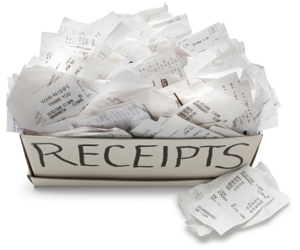Paying your bills on time every month is a great way to improve your credit score and avoid expensive late fees. But with car payments, utilities, mortgage or rent and a myriad of other expenses, how are you supposed to keep everything straight?
A bill paying organizer is an online or offline system that helps you keep track of various due dates, payment addresses, account information and balances. Here are a few of our favorites!
Digital
- Manilla is an online bill paying organizer that helps you manage all of your accounts within a single dashboard. Manilla lets you sync everything from credit cards and loans to utility bills, and delivers all of your statements directly to your secure account. Manilla will also send you automatic reminders before your monthly payment is due, preventing late fees and penalties.
- Zumbox is a bill paying service that replaces physical, mailed bills. With Zumbox, you can synchronize all of your bills for free, whether you send payments through your bank or use your vendor’s autopay option. You’ll also get emailed reminders when it’s time to pay and account updates whenever a payment is made.
- AceMoney is another great choice for personal finance management and bill paying. Track spending, create and manage budgets, and import online banking data with AceMoney’s reporting tools. One drawback to AceMoney is that it’s not cloud-based and requires a download. It’s also unable to automatically sync with other online accounts, making it necessary to import data into the program via spreadsheet.
Hard copy
If you prefer to track payments the old fashioned way, you can use a physical method to store, organize, and update your finances each month.
- The bill paying organizer from Simply Organized has a variety of graphs and charts for tracking payments made and payments due, as well as handy pockets to store hard copies and envelopes.
- Home Storage Solutions has a great printable calendar that can be used as a bill paying organizer, with sections for the amount due, due date, interest paid, balance, method of payment, and payee.
- Creating your own bill organizer can be a great way to keep track of due dates and never miss a payment. Sometimes the act of writing down what’s due and when can be the most effective memory jog!
Use an Excel spreadsheet or a spreadsheet in Google Docs to create your own personalized bill paying tracking system. In addition to the above-mentioned categories, you can include a section for confirmation numbers, payee addresses or phone numbers, representative names or contact information, and a place for notes.If you use Google Docs or another dynamic online collaborator, you can easily share your bill pay document with your spouse, partner, or anyone else who needs to be privy to your finances.
Whether you use a cloud-based organizer or coffee-stained napkin, utilizing some kind of bill paying organizer is the best way to manage your personal finances and ensure payments are made on time, every time.
How do you track and organize your bills?
